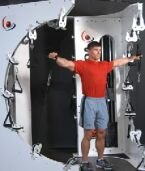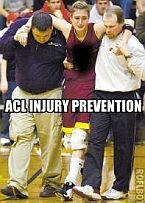Carpal Tunnel Syndrome
Carpal tunnel syndrome (CTS) refers to an irritation of the nerve that enters your wrist and goes to your hand and fingers. Symptoms may include any or all of the following: pain numbness, tingling, weakness in the thumb, second and third fingers; loss of grip strength; shooting pain toward the elbow, shoulder and neck; neck pain and stiffness. The word carpal refers to the 8 bones in the wrist (two rows of four across). The "tunnel" is formed on the top by a ligament which runs across the carpal bones and on the bottom by the carpal bones themselves. A nerve called the median nerve runs through this tunnel to the first three fingers of the hand. This nerve controls the feeling and muscle strength of these fingers.
An important and often misunderstood point is that all the nerves that go into the arm, forearm and hand start in the neck. The median nerve is formed from branches of five of the nerves (nerve roots C5 - T1) that come off the spinal cord in the lower part of the neck.
CTS has many causes. Anything which irritates the median nerve can cause CTS. The term nerve entrapment syndrome is used to describe areas along the pathways of nerves where the nerve is inflammed or has pressure on it. The median nerve may be entraped at the hand, wrist, and/or forearm. There may also be nerve irritation in the cervical spine in the area of the nerve roots which form the nerve.
You may have heard the terms repetitive motion injury or cumulative trauma disorder; these apply to CTS. Overuse, improper use, or both of the hand and wrist may irritate and inflame the median nerve. People who type (computer or typewriter), grasp (store check out counter, painters, plumbers, electricians, carpenters), lift, or do anything with their hands are susceptible to this problem.
Studies have shown that there are other factors which can increase the risk of CTS such as pregnancy, obesity, and a sedentary lifestyle.
CTS may start with just a slight, occasional tingling in the fingers. The tingling may progress to numbness and pain of your wrist and hand. Ultimately, loss of gripping and grasping ability with severe pain radiating to the neck may occur. Elbow and shoulder pain may also occur.
A proper history and examination must be performed to properly diagnose CTS. The doctor should ask about your work habits and what causes the pain. The examination should include the taking of vital signs, reflexes, muscle strength, range of motion of your neck, shoulder, elbow, hand, wrist, and fingers, and orthopedic tests. Other tests may include X-rays, blood flow (vascular) tests, and nerve tests. The doctor must differentiate CTS from disorders like sprains and strains of the wrist, fractures, pinched nerve in the neck, ganglion cysts, and ulnar neuropathy ( another nerve going through the wrist to the fourth and fifth fingers).
Treatment for CTS may include chiropractic care, medical care or both. Chiropractic care address the crux of the problem- the nerve irritation. By properly aligning and restoring the function of the joints of the wrist, elbow, shoulder, and neck, chiropractic care helps treat one cause of the nerve irritation.
Chiropractors use what we call an "adjustment" or manipulation to the joints to properly realign them. You may hear a pop sound when you receive an adjustment. This is just the release of gas (carbon dioxide, nitrogen) from the joint as if you popped the cork off a champagne bottle. This is what takes the pressure off of the nerves and allows them to work correctly.
Treatment of the muscles in the areas where the nerve is entraped addresses the nerve irritation directly. In the case of the median nerve, there are multiple sites in the hand, wrist, and forearm where the muscles may be injured because of weakness, inflexibility, overuse and improper use. This can cause the muscle to tear and/or build up friction and tension. These injuries cause a decrease in circulation and a decrease in oxygen supply to the muscle. This causes scar tissue or adhesions to develop and then this situation becaomes self-perpetuating. The adhesions cause pressure and decreased circulation and oxygen which causes more adhesions to form.
Two techniques that break up these adhesions in the muscles are called Active Release Techniques® and Graston Technique. We are the only office in the state of Maryland that is fully certified in both techniques!
Treatment may also include physical therapy meaning electrical muscle stimulation and ultrasound. Proper rehabilitative exercise, nutritional support as well as instructions on how to use your arm and wrist properly at work (Ergonomics) are all essential parts of complete care. Taking medication to cover up the pain may be fine for the short term, but this does not fix the problem. Surgery should only be considered as a last resort if all else fails.
Which would you rather do turn off the alarm or put out the fire?
Choose chiropractic care!
|
The Ultimate Nutritional Lie Detector Test LEARN MORE 
|
Kettlebell Rehab

Click Here
To See How Kettlebells will transform your body!
Vortex Rehab

Click Here
To See How This
Revolutionary Machine
Can Help You!
Partner / Support

Loans up to 3 months - fast cash advances for up to 90 days and up to $5,000!


















